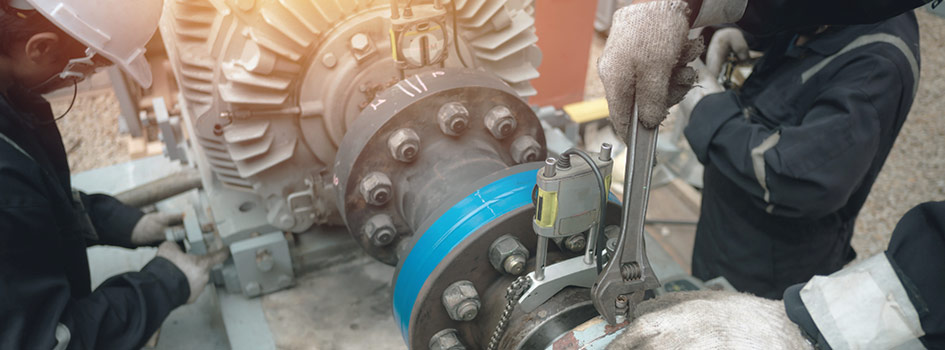
Why Choose Remanufactured Products?
When a product becomes worn down or stops working, some industrial users opt to scrap it and buy a new one. But with the right parts, tools, and technical know-how, most products can be restored to full functionality. This is a process known as “product recovery,” and it comes in many forms, including refurbishing, rebuilding, and remanufacturing.
What is Remanufacturing?
Remanufacturing is the process of restoring the function of an old, used, or worn-out product through repaired, reused, or brand-new parts. With remanufacturing, you can take things like electronic equipment, engines, aircraft components, industrial equipment, and auto parts that are old, worn down, or even non-functional and return them to a condition that meets the manufacturer’s factory standards.
So, what’s the distinction between remanufacturing and other forms of product recovery? How exactly does the process of remanufacturing work? Read on to find out!
Remanufactured vs. Refurbished vs. Rebuilt vs. Reconditioned
Remanufacturing involves restoring a used product to like-new condition through a comprehensive process that includes disassembly, replacement of worn parts, and reassembly to meet or exceed original performance specifications.
Refurbishment involves repairing or restoring a used product to a functional condition, typically focusing on cosmetic improvements and basic repairs without necessarily replacing all worn parts.
Rebuilding involves dismantling a product and replacing worn or damaged parts with new or rebuilt components to restore functionality.
Reconditioning is the product recovery process that is the most similar to remanufacturing. Both involve the replacement of damaged or worn components. Still, the big difference is that in remanufacturing, the process is meticulous enough to return the product to the manufacturer’s original specifications, which maintains the warranty. Reconditioned products, on the other hand, cannot use the product’s original warranty.
If you need industrial remanufacturing solutions, contact a DXP engineer to see how we can help!
Benefits of Remanufactured Products or Parts
Here are some of the major reasons that opting to use remanufactured products or parts can be beneficial to you and the environment:
- Cost Savings – Remanufacturing offers significant cost savings compared to purchasing new equipment. Businesses can acquire high-quality products at a fraction of the cost of new ones.
- Sustainability – Remanufacturing reduces waste by extending the lifespan of existing equipment and minimizing the need for raw materials and energy used in manufacturing new products. It promotes a circular economy by keeping products and materials in use longer.
- Quality and Reliability – Remanufactured products undergo thorough testing and quality checks, ensuring they perform like new and meet industry standards.
- Reduced Downtime – Instead of waiting for new equipment to be manufactured, businesses can quickly acquire remanufactured products, minimizing downtime and disruptions to operations.
- Environmental Impact – Remanufacturing significantly reduces carbon emissions and environmental impact associated with manufacturing new equipment.
The math is simple: Remanufactured parts or products are frequently cheaper than new ones. They reduce your carbon footprint, and they won’t lose their warranty, so you have peace of mind should anything go wrong with the restored equipment. Choosing remanufactured parts should be a no-brainer.
Remanufacturing is also a much faster option than purchasing new. Basically, remanufacturing an API 610 pump gives the customer a new pump quality and warranty in 1/4 of the lead time. This can translate into months of increased production and profit for the end-user.
How Does the Remanufactured Pump Process Work?
To get a better understanding of how the remanufacturing process works, let’s look at how remanufacturing companies restore the function of an industrial pump.
- Disassembly – The disassembly process in remanufacturing involves more than simply taking the product apart. As a pump is disassembled, an inventory of items is carefully made, and the need for new components is identified. The pump is then dismantled and thoroughly cleaned using a number of different processes, with extreme care taken to keep all components in working order.
- Inspection – The fully disassembled and cleaned pump is then inspected to assess the condition of all of its components, as well as the size and concentricity of critical dimensions. This information is then documented in an inspection report.
- Engineering Review – An engineering review is performed using the results of the disassembly inspection report and other collected information to determine the order specifications for the remanufacturing process.
- Assembly – Once the requirements for remanufacturing have been determined and the necessary components have been acquired, it’s time to assemble the remanufactured pump. Critical dimensions are checked before, during, and after the assembly process and recorded in an inspection report.
- Performance Testing – The remanufactured pump must then be tested to ensure performance. This can include a full hydraulic and mechanical performance test, a mechanical run test — and depending on specifications — a net positive suction head test. Test standards are generally derived from the Standards of the Hydraulic Institute and the API 610 Standard.
Get Quality Industrial Pumps Faster with Remanufacturing by DXP
At DXP, we are committed to sustainability and offering cost-effective solutions to our customers. Our pump remanufacturing services through PumpWorks transform used equipment into reliable, high-performing assets. Whether it’s pumps, motors, valves, or other industrial components, our remanufacturing process extends product life cycles and reduces environmental footprint.
Interested in exploring remanufactured solutions for your industrial equipment needs? Contact DXP today to learn more about our remanufacturing services and how we can help optimize your operations with cost-effective, sustainable solutions.
